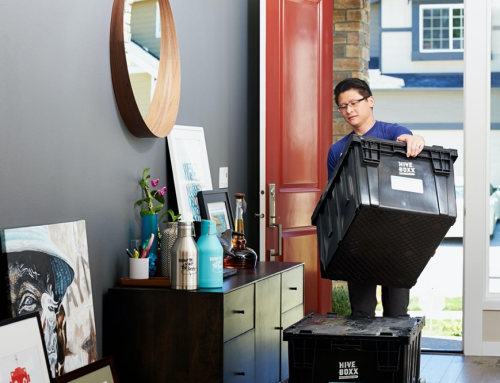
According to Dr. Jonice Webb (Psychologist and author of one of my favorite personal growth books, Running on Empty: Overcome Your Childhood Emotional Neglect), “A Core Feeling is the one emotion that you experienced the most often, or intensely, growing up. It becomes embedded in the software of your brain. As an adult, this feeling is very real, and can at times be very strong.”
What brings out core emotions?
It could be shame, fear, sadness, loneliness, etc. We don’t feel it every day as an adult but it is there waiting to surface. It often shows up when we are alone, undistracted or stressed. Certain events will activate it. This core emotion or feeling sounds a lot like our attachment style behavior. When we are stressed or in conflict or lonely, we react insecurely. Our insecure attachment and our core emotions flare up when our defenses are lowered or piqued.
I’ve mentioned one of my core emotions is a fear of being alone and unprotected. I grew up with great parents who tried their best, but they were divorced and often pre-occupied with the rigors of keeping their heads above water financially and caring for a household and its occupants. My sister and I competed and fought for our parents’ attention and resources. My parents did not have the time or skills to help me work through my feelings. My sister preyed on any sign of weakness, so I did not feel safe sharing my sadness or stress with her. I developed the belief that I had to take care of myself and handle all of my issues, including my painful emotions around being alone and overlooked.
We manage them in unhelpful ways
I brought these beliefs and feelings with me into my adult relationships. When I started to get overwhelmed by my duties as a parent and wife, the core emotions slipped out. I felt alone again. I tried to turn to my husband (at the time), to ask him to help relieve the loneliness and overwhelm. The trouble was, my ex-husband did not know how to handle these emotions either. He had been taught to stay busy, achieve and bury emotions.

I stuffed the feelings for a while and marched on as a suburban mom. I looked to outside sources to make me feel better — guitar lessons, new friends, research into spiritual practices, rigid fitness routines, etc. Now, these outside source were not a complete waste of time. I learned a lot about myself and the world from them. In a way, they made me strong enough to handle processing the tough emotions. I needed to face those feelings because avoiding feelings (and actions for that matter) only makes them bigger and stronger and more difficult to manage.
It wasn’t until years later, that I learned I had to face and process these fears and emotions. I went through my divorce without actually processing them.
I had to fail at a few more relationships, including one with my child, before I truly felt the emotions at my core and began to process their messages.
What I have learned from my experience and Dr. Webb is that we must complete a few steps to manage our core emotions. I have listed them below.
Steps to Managing Our Core Emotions
Feel it or them: Instead of stuffing them down or distracting ourselves so much that we don’t feel the discomfort of these painful emotions, we have to face them and feel them. This means when we get that overwhelmed or sad or lonely feeling, we have to sit with it and let it wash over us. The good news is it will pass, if we let ourselves feel it fully. It is OK to cry or get angry. It is OK to need rest and time to process. I realize our lives are busy and taking time to process these feelings is not easy, but trust me, if you do not feel these emotions, they will erupt somehow in a more destructive manner.
Know when it/they strike: It is important to be conscious of when and with whom these old feelings surface. Is it when we have money issues? A lot of old pain relates to money scarcity. Is it when a relationship becomes serious? This is common too. Is it when we feel overloaded with work? There are limitless possibilities.
What story does it give me about myself? Why did I feel this way as a child? How does it affect me now? These questions lead us to our personal narrative. What stories do we tell ourselves repeatedly? How based in reality are they? If we can see how our past feelings come through in the present, we can heal.
Complete the narrative: Our stories are not complete. They will be written and re-written until we die. When we feel the emotions, we see how the past and present are connected and share this story with others, we process it more fully. We give the story resolution, an arc. For example, when we share with our partners how we developed these feelings as a child, we give them insight into our behavior. We aid the growth in our relationship. Growth is the ultimate result of processing these emotions.
Relationship challenges become easier
The relationship I am in now, benefits from the processing I have done around my core emotions and attachment style. It is still challenging, but easier to understand and work on. We have a chance to find relief and resolution when we struggle because we can express these feelings and understand their origins. I encourage all of you to take the time to consider your core emotions and how they affect you and your relationships.
What are your core emotions? What prompted them in your childhood? How and when do they surface now?
Photo by Desatboy . on Unsplash
If you are interested in other ways to improve your relationship connection, check out my online course, it’s titled: How to Strengthen Connection Within a Relationship: Increasing Safety and Security to Create Closeness. I wanted to share it with you, my faithful readers. Please check it out. There are two lectures available as free previews, including the intro/overview. The lecture on receptivity is also available for preview if you scroll down in the course curriculum.
Inside the course, you’ll find lectures on attachment styles, working with insecurities, conflict styles, responsiveness, soothing and comforting each other and much more. There are exercises, mini-scripts and related posts. I tried to give lots of examples during the lectures.:)








Leave a Reply